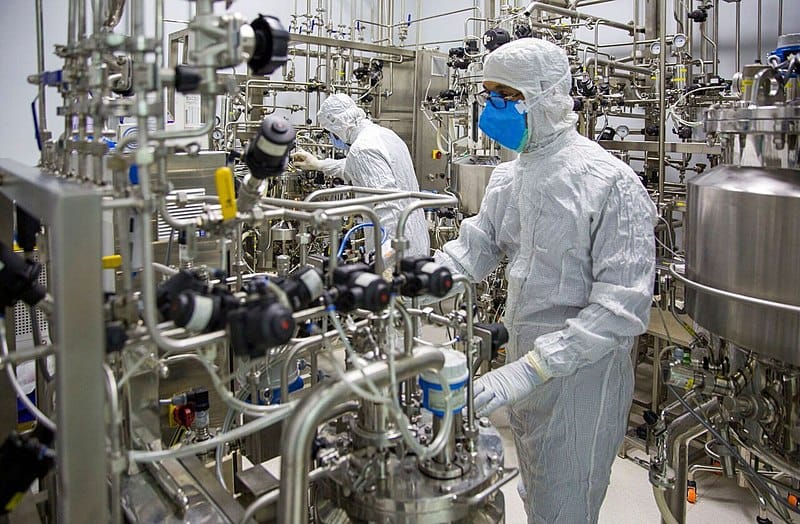Preparing For The Trade Wars

The story is told of my Grandfather, at San Pedro Harbor in the late 1930s, watching a couple of cargo ships filled with iron and scrap metal headed across the Pacific to Japan. “They’re sending Japan the steel to fight against us,” said Grandpa. On December 7, 1941, his vision came true as the Japanese Imperial Air Force attacked Pearl Harbor.
Today, those who are as prescient as my Grandfather see a similar conflict in our time. Fortunately, it is not a hot war but an economic one that is likely to require our sacrifice, just as World War II required sacrifices from American Citizens nearly a century ago.
What is apparent is that the price of many of the products and goods we rely on will have substantially higher costs, resulting from increasing tariffs. Or, in the most extreme cases, it may not be available at all. Potential shortages should be our primary focus.
So, let’s take an inventory of our home, estimating the items that are most important and likely to run out in case of a supply chain disruption.
At the top of my list are the medications that I take daily. It may come as a surprise, but many, perhaps most, of these prescription medications are produced overseas.
Unfortunately, it is nearly impossible to determine whether or not a particular drug is made in China, for instance. After calling my doctor’s office and the pharmacy I use, neither could tell me where my meds were made. However, the University of Minnesota has an excellent website:
https://www.cidrap.umn.edu/ is very helpful.
“We have found that the vast majority of generic drugs and their API, much like brand drugs, come from foreign sources,” said Stephen W. Schondelmeyer, PharmD, PhD, co-principal investigator of the Resilient Drug Supply Project, part of the University of Minnesota’s Center for Infectious Disease Research and Policy, publisher of CIDRAP News.
Another valuable resource is https://www.pharmacychecker.com/. There, you will find a very insightful report, “Not Made in the USA,” that details how we got into this state. What’s more, you can type in your prescription on that same page and see where you can purchase it worldwide.
Pharmacy Tracker is a valuable tool if, for instance, US Pharmacies run out of your particular prescription, but a European provider can send it to you. Although, under the current iteration, you may incur a 10% tariff, it would be preferable to doing without.
Consider purchasing some of your meds beforehand.
This same strategy of seeking alternative sources and possible stock-piling inventory is being used by many of the country’s more savvy corporations. You may have read that Apple Computer leased several cargo planes to fly iPhones in from India just before any major increase in tariffs.
China
However, of all the countries subject to increasing American tariffs, China is the chief target. President Donald Trump and Chairman Xi Jinping have “dug in their heels,” refusing to bend to the other’s demands. On both sides of the Pacific, tariffs are nearing or exceeding 100%, and there is a real possibility that trade in specific items could stop.
So, let’s examine those items that China exports to the United States and would be subject to interruption. As noted, pharmaceuticals are a significant export item for China. In the latest reported year, 2023, China sent $43 billion in meds to the US.
As substantial as that amount is, it pales compared to the Chinese electronics sent to America. Again, in 2023, China sent $548 billion in electronics and electronic equipment stateside. The message is clear: If you need something electronic, order it now while it’s still available.
Other precision-manufactured Chinese products include machinery, lab and medical equipment, technical devices, photo supplies, specialty vehicles, and equipment, and the list goes on and on.
It is worth it to take a moment to determine what you may need over the next six months and find out where it is made.
My professional friend was having trouble with his iPhone the other day. It’s his only phone, and he must be available around the clock. It makes sense that he is considering purchasing a new iPhone now while it is still readily available.
The Outlook
For those who have followed Donald Trump for a while, you know that much of what he is doing today is “Standard Operating Procedure” for the President. He generally leads with the most draconian outcomes, later backing off to a more reasonable position.
Chairman Xi may also utilize a strong initial posture and be open to compromise as events progress. If you’ve noticed, Xi has chosen to have others respond to Trump, avoiding direct person-to-person conflict. This tactic would be consistent with some resolution where Xi steps in personally later as the great “compromiser.”
In any event, there is a better-than-even chance that what we’re seeing now is the hottest phase of this economic conflict. A conflict that, hopefully, will not last long. If that’s the case, then some of the precautions you’d take now would not be necessary in a few months.
But if this conflict drags on for months, your strategy of taking inventory of the items you rely on and finding alternative suppliers will prove invaluable.
**
If you enjoyed this article, please consider buying me coffee.
Go to:
https://buymeacoffee.com/davidreavill
Thanks for reading!